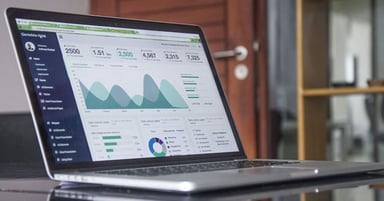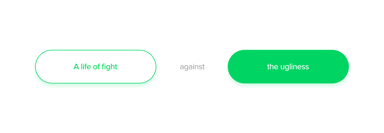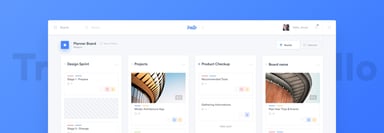Why (Less) Options is More - Anticipatory Design, pt. 2

Now it’s time to specify who can benefit from that kind of design the most, explain what possible risks can be related to it and tell you what our approach to anticipatory design is.
Who and what will benefit the most from anticipatory design?
“The more things we decide over the course of a day,” Shapiro wrote, “the lesser ability we have to make effective decisions.” Indeed, one of the most compelling reasons for anticipatory design isn’t just convenience, but improving the quality of our decision-making. By decreasing the amount of trivial decisions in our lives, we leave brain space to concentrate on the more pressing matters.
Put simply, anticipatory design is about empowering the user with more time, less worries, and helping to guide them through this information-overloaded world. But it’s up to us as designers and developers to conceive of the areas in our lives where an anticipatory approach would be of greatest benefit, and design our applications accordingly.
Shopping, for instance, could be greatly improved with anticipatory design. Based on your calendar, an app would be able to tell that you’re partial to Indian food, and, judging by your recommendations on Tripadvisor and Facebook, it seems that chicken korma is your favourite meal when you go out. So, when your smartphone app suggests that you’d want to make this classic dish for yourself at home tonight, and you say ‘yes’, is it really that farfetched to believe that everything you need will arrive at your door shortly after you arrive home from work? And hey, it’s been 2 days since you topped up on milk and cat food, so your supplier anticipated that and popped these bits in your box, too.
What about films, TV shows and music? We’ve all got our preferences, and these indeed will differ from day to day and week to week. Anticipatory design will gather all of this data, and provide users with the perfect entertainment selection at the perfect time, every time.
And the same goes for what to wear in the morning. Knowing what’s in your wardrobe and what you have planned for the day, the perfect (stylish) outfit could be selected for you – all you’ve got to do is dig it out.
What are the problems of anticipatory design?
As I mentioned in the first part of this post, anticipatory design isn’t for everyone, and indeed, some of the concepts might even seem quite alarming. In the full-blown scenario of our example, you might think that, sure, for business people who need to be in a thousand places at once, this is a great idea for organising, for example, transport. But buying a book is a whole different story.
And in fact, one of the biggest challenges comes in trying to conceive exactly when this approach would be appropriate, and when it would most certainly not be. The question really is, does this type of design aim to absolutely automate all of our behaviours and choices?
Well, the answer to that is no. Anticipatory design is not about enforcing a completely holistic overtaking of all of the decisions in a person’s life. Indeed, this just highlights one of the numerous attendant risks that come with anticipatory design. As we all know from using predictive text on our smartphones and tablets, the computer is never guaranteed to get it right, and sometimes this function is more annoying and time-consuming than anything else – sometimes I wanna say ‘wanna’ rather than ‘want to’, but my phone invariably automatically anticipates what I’m trying to say and corrects the perceived spelling error. Of course, when the phone gets it right, it’s a thing of genius – but when it get it wrong, it’s an irritancy.
And such is the problem – or the potential problem – with anticipatory design in its entirety. Taking choice completely away from the user, especially when it comes to making purchase decisions, is risky. The proper approach, therefore, must be undertaken intelligently.
The Netguru approach to anticipatory design
The philosophy of anticipatory design is already in practice. We all know recommendations, notifications or geo-localisation which have existed for some time now. Here at Netguru we’re practicing it all the time. Indeed, it feels like this soon this won’t be a trend, but an expectation from nearly all of our clients, and we certainly bring it to the conversation with everyone new who comes on board.
When we’re in the process of creating a product involving anticipatory design, we like to take ourselves and our clients through the following phases:
First, we ask: How can we define ways in which the user’s life will be simplified to the utmost with this application? And from those answers, we make a comprehensive list.
Next, depending on available data, we analyse the preferences of similar applications’ users, or, if we’re improving on an existing build, we take existing users’ preferences into consideration. Every next step is always based on precise benchmarking and deep research.
Finally, we gather together all researched data and define ways to create an app experience limiting the number of open questions as much as possible.
In the end, we make life harder for ourselves as designers – constructing these sort of super-smart applications isn't easy. But it’s for the user’s convenience, not the developers’, that anticipatory design has been conceived. Adding features is easy. It is hard to decide what to leave out.
As mentioned in the first part of the article, here at Netguru we are advocates of anticipatory design. We find it it extremely exciting and believe that it’s more than just a trend, but the future of development.
Indeed, we encourage you to consider anticipatory design for your projects. It’s how you will stay competitive in an increasingly evolving market. And so we’d like to leave you with Aaron Spiro’s 5 steps to lead your brand to anticipatory design so you can think about how can apply the concept to your application.
Aaron Shapiro’s 5 Steps to Lead Your Brand to Anticipatory Design
- Think of your brand as a service: what does it enable its users to do?
- Enable your service digitally.
- Assess what you can do to automate the delivery of your service.
- Establish your automated service.
- Draw a line between what is acceptable decision-making and what isn’t.
Get in touch to see how Netguru can help bring anticipatory design to your application.





.jpg?width=384&height=202&name=10%20Tips%20for%20Stunning%20%20Dark%20Mode%20Design%20(1).jpg)


















.jpg?width=384&height=202&name=Orbem%20website%20on%20a%20laptop%20(1).jpg)
